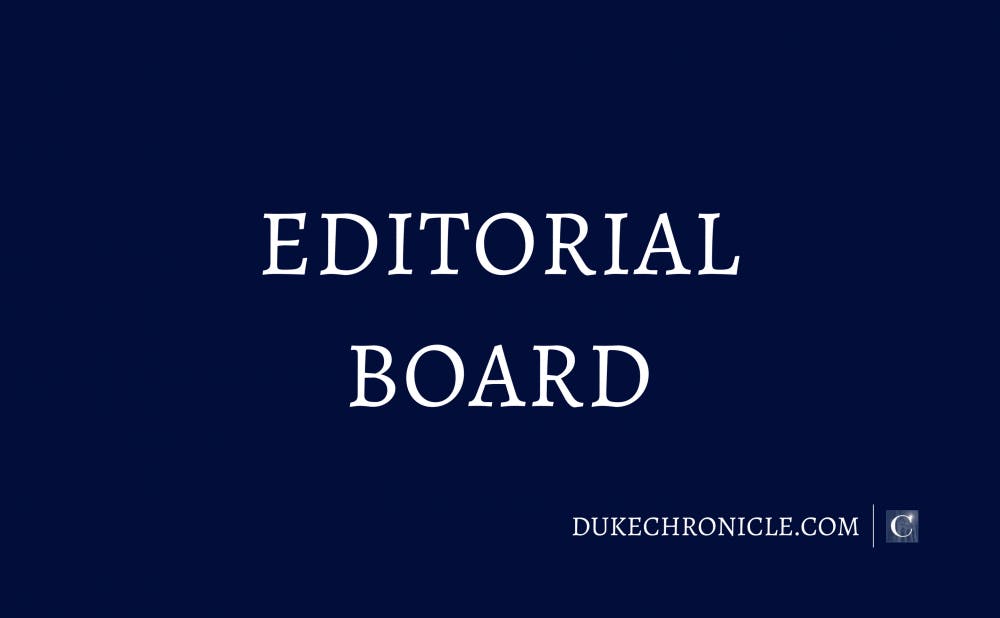The spring semester of 2019 has officially begun, and with the new academic term brings familiar campus rituals. Eager young freshmen—suited up in blazers and decked out in cashmere—graze the open houses of Duke’s Greek and SLG organizations, armed with flatteries in their quest to carve out a social niche on West. Worldly juniors coming back from study-abroad find themselves back inside the Duke bubble, struggling to situate back into the stressed-out syncopations of campus life. Seniors, the last cohort to still remember Grace’s Cafe (you are still dearly missed) and the class of 2016, find themselves in the role of elder statesmen on a campus that has changed dramatically over the past four years since they arrived on East that fateful morning in August of 2015.
The new year gives each class cohort at Duke an opportunity to ruminate about their place in the University in space and time. In contemplating our existence on a campus rapidly changing both physically and in terms of student makeup, we should not lose sight of our position in relation to the grand scheme of Duke’s nearly 100-year timeline. Looking back at the zeitgeists shaped by the thousands of previous Duke students who graced the Gothic Wonderland before us, we can perhaps better understand our own place at an institution progressing into the vast unknown of the 21st century.
One hundred years ago, our student forbearers graced a small liberal arts college known as Trinity, surrounded by tobacco mills and with them the promise of a robust, post-Civil War industrialized South. Images of the Great War—of an entire generation mowed down in the muddied trenches of the Somme and Marne—were probably still fresh in the collective consciousness of Trinity students, many of whom left to fight in the “war to end all wars.” Trinity students also had to be wary of the the Spanish Flu, humanity’s worst global pandemic since the Black Death, which resulted in over half a million deaths in the U.S. alone. Female Trinity College students still could not not exercise their constitutional right to vote (although that would change soon with the passage of the 19th Amendment). Trinity’s student body scarcely could have conceived that in only five years, their sleepy Southern college would be transformed into “Duke” University, courtesy of the eponymously endowed nouveau riche tobacco fortune.
Fifty years ago, Duke students would have confronted a campus very much in turmoil, in keeping with the political mood of universities all across the country. America’s ethically dubious military involvement in Vietnam and the still unsolved issue of civil rights for all Americans plagued the consciences of many students who came of age in one of the most divisive eras in our nation’s history. Duke ultimately was forced to confront its own race problems when black students, fed up with the lack of institutional support given to them in the process of desegregating the University, took over the Allen Building on February 13, 1969. The tumultuous events of early 1969 on Duke’s bucolic Southern campus eventually resulted in the resignation of President Douglas Knight, who had called in the police to “control” the situation in Allen.
While 2009 seems like only yesterday, 2019 marks a decade since the era of Silly Bandz and Teach Me How to Dougie. Many current Duke undergraduates likely remember the monetary anxiety facing their parents during the Great Recession. The economic downturn—a decline in United State’s GDP caused by the subprime mortgage crisis and risky, predatory bank lending practices—sent ripples throughout the country as dramatic numbers of job losses ensued. Even Duke was not immune to this financial turmoil. In 2009, the endowment shrunk by $1.68 billion to $4.4 billion. Like many comparable universities feeling the pressure of the recession, this endowment diminution put Duke in a financially precarious position. However, ‘09 also offered a lot of hope for millions of Americans. In January, the world watched as the first African-American U.S. President was sworn into office. With an officially estimated 1.8 million in attendance, the inauguration shattered previous records for number of people gathered on the National Mall.
As undergraduates find their way back to campus via RDU and prepare for a semester of new courses, life is breathed back into campus again. The university has bared witness to decades of changes and new challenges, as have Duke students. While the future remains uncertain and we have no one of telling what on the horizon will greet us tomorrow, there is comfort in knowing that time and the University continues to march on relentlessly.
Note: this editorial was written by the board chairs.
Get The Chronicle straight to your inbox
Signup for our weekly newsletter. Cancel at any time.

